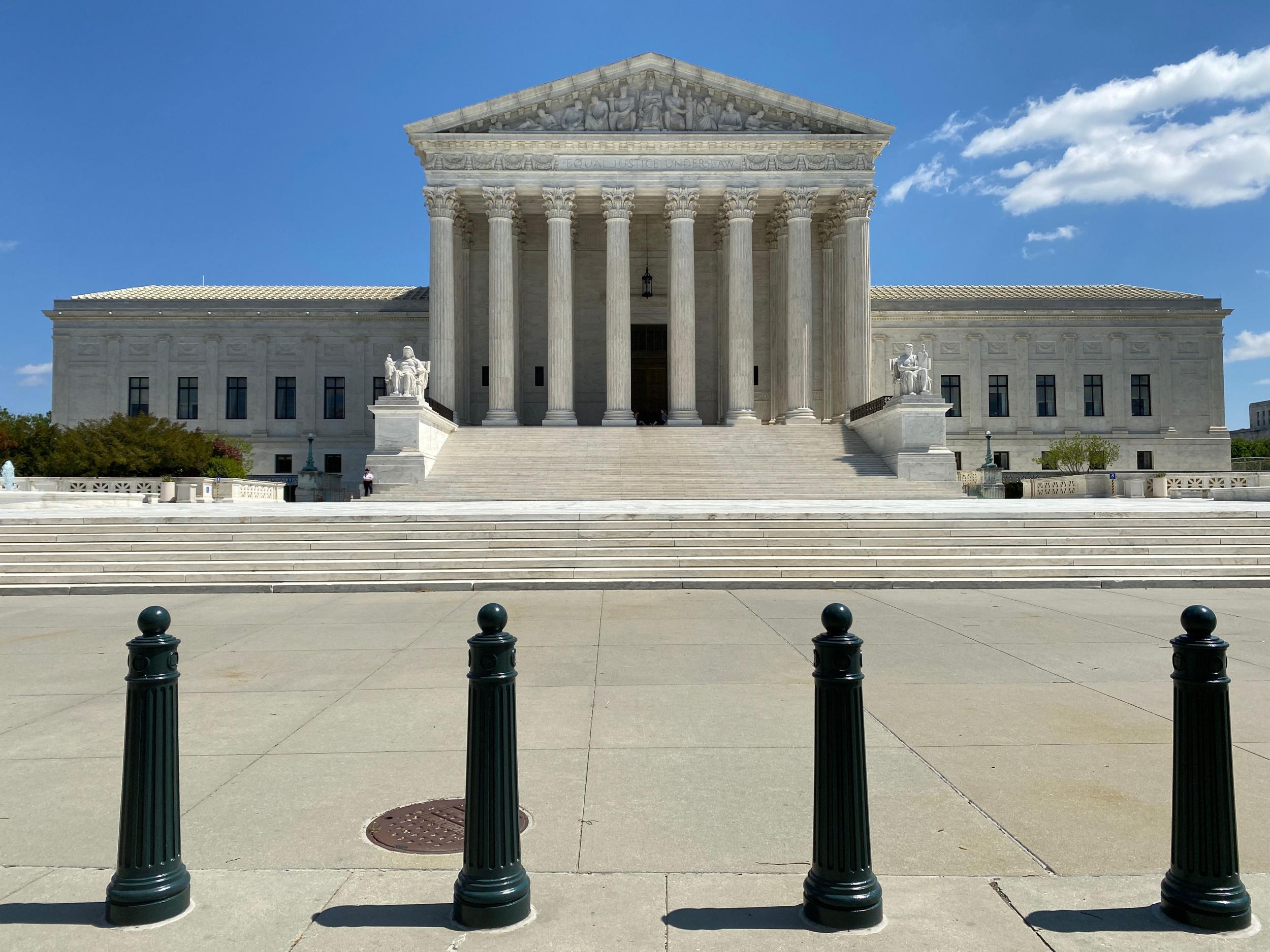The Supreme Court just voted down a racist law — but put abortion rights at risk in doing so
Two obscure Latin words now mean Roe v Wade could be at risk


Your support helps us to tell the story
From reproductive rights to climate change to Big Tech, The Independent is on the ground when the story is developing. Whether it's investigating the financials of Elon Musk's pro-Trump PAC or producing our latest documentary, 'The A Word', which shines a light on the American women fighting for reproductive rights, we know how important it is to parse out the facts from the messaging.
At such a critical moment in US history, we need reporters on the ground. Your donation allows us to keep sending journalists to speak to both sides of the story.
The Independent is trusted by Americans across the entire political spectrum. And unlike many other quality news outlets, we choose not to lock Americans out of our reporting and analysis with paywalls. We believe quality journalism should be available to everyone, paid for by those who can afford it.
Your support makes all the difference.In one of the most unusual 6-3 votes in its history this week, the Supreme Court struck down laws banned non-unanimous jury verdicts. The result of Ramos v Louisiana means that split juries won’t be able to convict for serious crimes — but the consequences of that are much more complicated than they seem.
First, let’s talk about Ramos, the person who brought this case to the Supreme Court and began the entire process. Ramos was convicted by a 10-2 vote of second-degree murder and sentenced to life in prison without parole; in other words, 10 jurors voted guilty and two didn’t. In 48 other states and the federal system, a 10-2 vote would have resulted in a mistrial and the state would have been required either to try Ramos again or release him. In Louisiana, that didn’t happen.
Writing for the majority at the Supreme Court, Justice Gorsuch overruled a confusing 1974 case that allowed the states to continue to have non-unanimous juries despite the origins of such measures in racist Jim Crow laws. Justice Gorsuch noted that the requirement of juror unanimity emerged in the 14th century England and was viewed in England as a vital right protected by the common law. He invoked Blackstone’s comment that the any accusation must “be confirmed by the unanimous suffrage of 12 of his equals and neighbors, indifferently chosen, and superior to all suspicion.”
Unanimity was the general rule at the time of the founding of the United States and was followed in both state and federal courts, until Louisiana changed the law in 1898 as part of a package of laws restricting the rights of African Americans. Oregon, under the powerful influence of the Ku Klux Klan, implemented a similar rule for similar reasons in the 1930’s.
The first challenge to this came in 1974, when four Justices said non-unanimous juries were constitutional; four said they weren’t and the tie-breaker said they were required in federal court but not in states. Justice Gorsuch correctly called the decision “muddled.”
So what was the problem with overruling the earlier decision and why did three Justices, including the liberal Justice Kagan, dissent from overruling a racist anomaly this week? The answer is a Latin phrase — “stare decisis" — which requires courts to follow prior precedent in cases that involve the same issues. Stare decisis keeps the law predictable, consistent and not subject to politics. Yet lurking behind these two words of a dead language is the central ideological football of our time.
If stare decisis did not exist, the meaning of the Constitution would be up for grabs every time the composition of the Supreme Court changed. But if it were always applied, the law would stagnate and ossify in potentially dangerous ways. We would still have segregated schools, for example, and the New Deal would have been struck down before it got under way. All this would seem very academic if issues like abortion and voting rights were not fundamentally at stake.
Justice Kavanagh wrote a concurrence that waded directly into that battle. He noted that there was no coherence in deciding when prior decisions of the Court should be followed or ignored. He suggested a three-part test for whether prior decisions should be followed from now on. Firstly, the prior decision would have to be found to be “egregiously wrong” (not just wrong.) Secondly, the prior decision should have had provable negative consequences. And thirdly, justices should examine the interests of the parties to the case.
By these standards, Ramos was an excellent candidate for reversal. Non-unanimous jury laws were inspired by racism, leading to life without parole in a case where two jurors voted to acquit. That sounds pretty egregious — it is bad for people where jurors are seriously split to be found guilty — and poor Ramos has an interest in not spending the rest of his life in jail.
But make no mistake; the Ramos case was the first skirmish in a war between liberals and conservatives about overturning cases that they don’t like, especially on abortion and overturning Roe v Wade. In the majority were not only those who usually promote the Constitutional rights of defendants — Justice Ginsburg, Sotomayor and Breyer — but Justices Thomas, Gorsuch and Kavanagh, who rarely if ever show any concern about those rights.
Justices Thomas and Gorsuch have already indicated very limited adherence to stare decisis. So what’s going on?
Kavanagh’s three-part test was no doubt engineered with a look ahead to overturning or drastically limiting the constitutional right to abortion. Conservatives widely view it as the most “egregiously wrong” decision of modern times. They think a broad right to abortion is bad for society and bad for the individual woman; in other words, that it also certainly has negative consequences.
Justice Kagan supports abortion rights and joined the dissent in Ramos, elevating stare decisis over the rights of an accused in front of a jury for murder. She too is laying down a marker, arguing that the Court should not undo important prior decisions that have been around for a long time, even if she may not like the way the case came out. She is blowing the trumpet for conservative judging, trying to preserve nearly a half-century of abortion rights from being overturned by a radical anti-abortion group of four justices.
Ramos v Louisiana is an important decision in its own right. But it is really a prologue for battles to come on abortion and other critical issues of Constitutional rights. Three conservatives have run counter to form, expanding the rights of accused criminal in order to loosen the bonds of stare decisis. Justice Kagan would let Ramos stay in jail to lay down the principle of restraint in overruling old cases. The Chief Justice sits uneasily in the middle, no doubt an ideological opponent of abortion who also knows that a half-century of law and practice cannot easily be thrown away.
How much deference the Court gives to two Latin words will have great consequences for American society. After Ramos v Louisiana may well come the attempted reversal of Roe v Wade.
Join our commenting forum
Join thought-provoking conversations, follow other Independent readers and see their replies
Comments